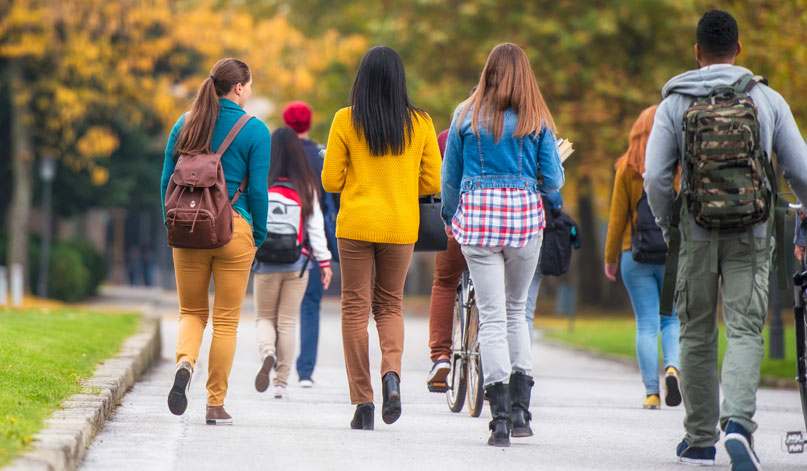How can we best support college students with invisible disabilities? One in 4 Americans have some form of a disability – including those in higher education. Many of these individuals have what may be referred to as an “invisible” or “hidden” disability: a disability that, while not immediately perceptible by those around them, can still significantly impact their lives.
To find out more about being effective allies to students with invisible disabilities, we recently sat down with 2 midwestern university students, Cora Gertsch and Patti Cataldo, to talk about their experiences living with invisible disabilities while in college. Cora, a junior psychology major, is completely blind in one eye and has Hypermobile Ehlers-Danlos syndrome, while Patti, a senior exercise science major, has chronic pain and chronic migraines.
How has your invisible disability affected your college experience?
Cora said that she has difficulties attending classes sometimes due to fatigue, meaning that she misses out on the firsthand information sharing that other students get. “And with my visual impairment, there’s a lot of reading. Reading for long periods of time is difficult, it causes headaches … sometimes all I can do is take care of myself.”
Patti struggles with pain, too, making attending classes challenging. “My homework takes longer, too, just due to like my head hurting. It's harder to do homework when you’re in pain all the time.”
Generally, her disabilities go unnoticed. “They are invisible because looking at me, you’d never know, most people don't know unless they know me well,” said Patti.
How has the pandemic affected your education, in the context of your disability?
For Cora, the pandemic proved beneficial when her school required a virtual option for attendance. This meant that not feeling particularly well didn’t mean missing class. “The pandemic brought the accessibility to colleges that people with disabilities have been asking for, for a long time.”
Patti received similar benefits. “The pandemic definitely made it easier for me to go to college … on days when I couldn't physically walk to class, I was still able to attend, or I wasn't penalized for not being able to go.”
Have digital technologies improved accessibility in your college experience?
For Cora, digital technology helped her to keep up and minimize her pain in the process. “Listening to text is helpful to prevent blurry vision, headaches, all that stuff.”
Patti’s results were mixed. “A lot of my professors are uploading more and more of their notes which I find super useful, so that I can still get all of the material without missing anything. However, it also has come with a downside. Due to my chronic migraines, I find a lot of times that computer screens hurt my head more and we're on computers so much more now.”
What advice would you give to others who want to be allies to students with invisible disabilities?
Cora advised starting simple. “I think first and foremost it’s just listen … being understood can be difficult, especially when you have an invisible disability; it tends to lead to more questions.”
Patti has found allies in friends who helped her advocate for herself. “I know I've had friends sit down with me before I would talk to a professor. We rehearsed the conversation to figure out what I'm going to ask for and how I'm going to ask for it ... that’s been so helpful.”
Be an Ally:

Listen
without judging, interrupting, or trying to fix anything. Let the individual speak their truth.

Question
your assumptions. Initial observations about an individual only relay a small part of their story and experiences.

Advocate
for others through supporting individuals as they advocate for themselves or supporting disability advocacy at large. Use your own unique network to create a more inclusive space on college campuses and beyond.

